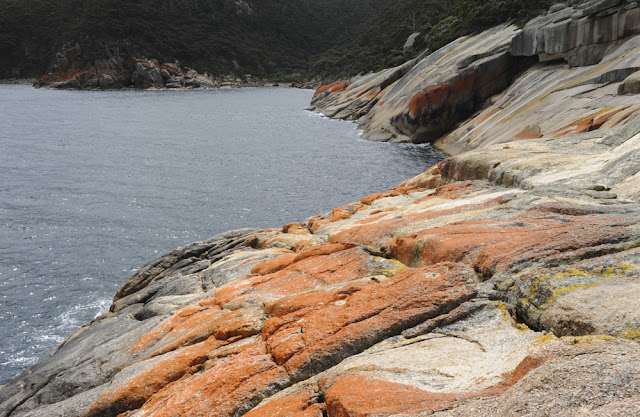I like to get close and explore texture and form when I take photographs for myself.
Here is a set of such shots from the Maria Island trip.
The Painted Cliffs - a well known sandstone feature on the island.
A close up of the weathered sandstone around the corner from the previous shot.
And another from around the next corner.
Meanwhile, over on the far western side of the island, there are the fossil beds at Fossil Bay - once quarried for limestone to make cement.
Footprints left on the beach by a Tasmanian Devil as it prowled at night.
The distinctive claw pattern of an echidna's tracks where one crossed a sand dune.
To keep sand and dirt out of their ears, wombats have a dense mat of hairs covering their aural orifices.
The striped pattern on eucalyptus trunks left by bark cast at different times.

























































